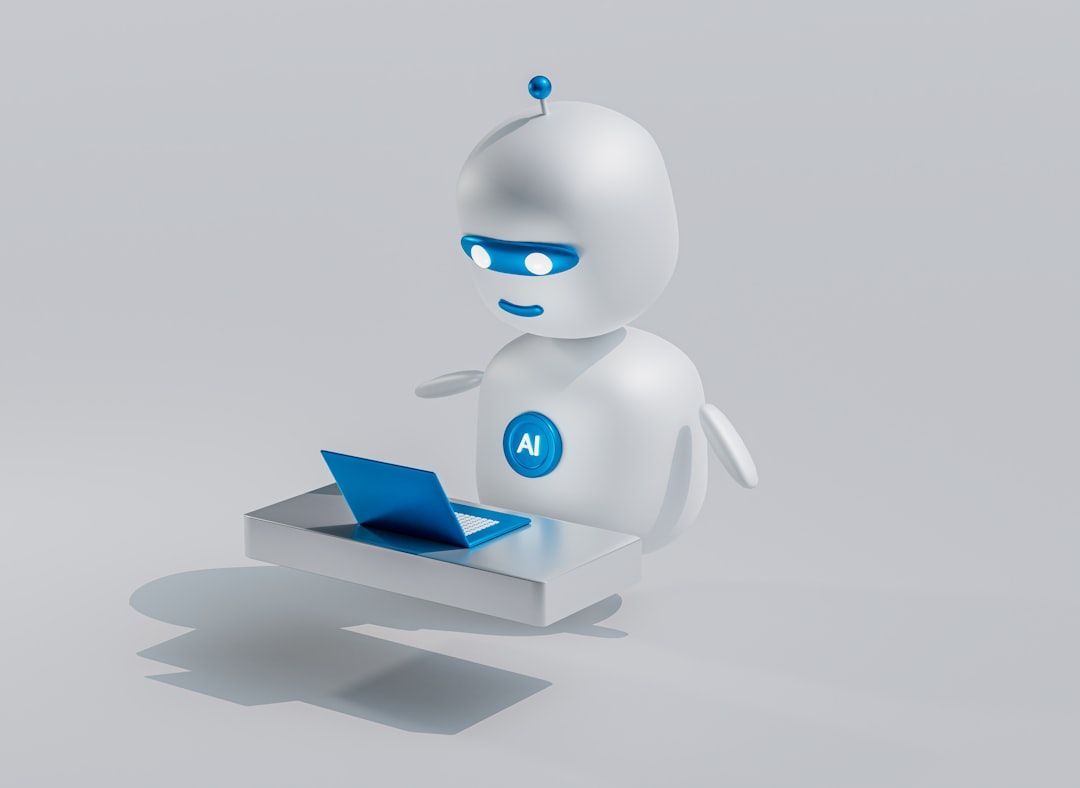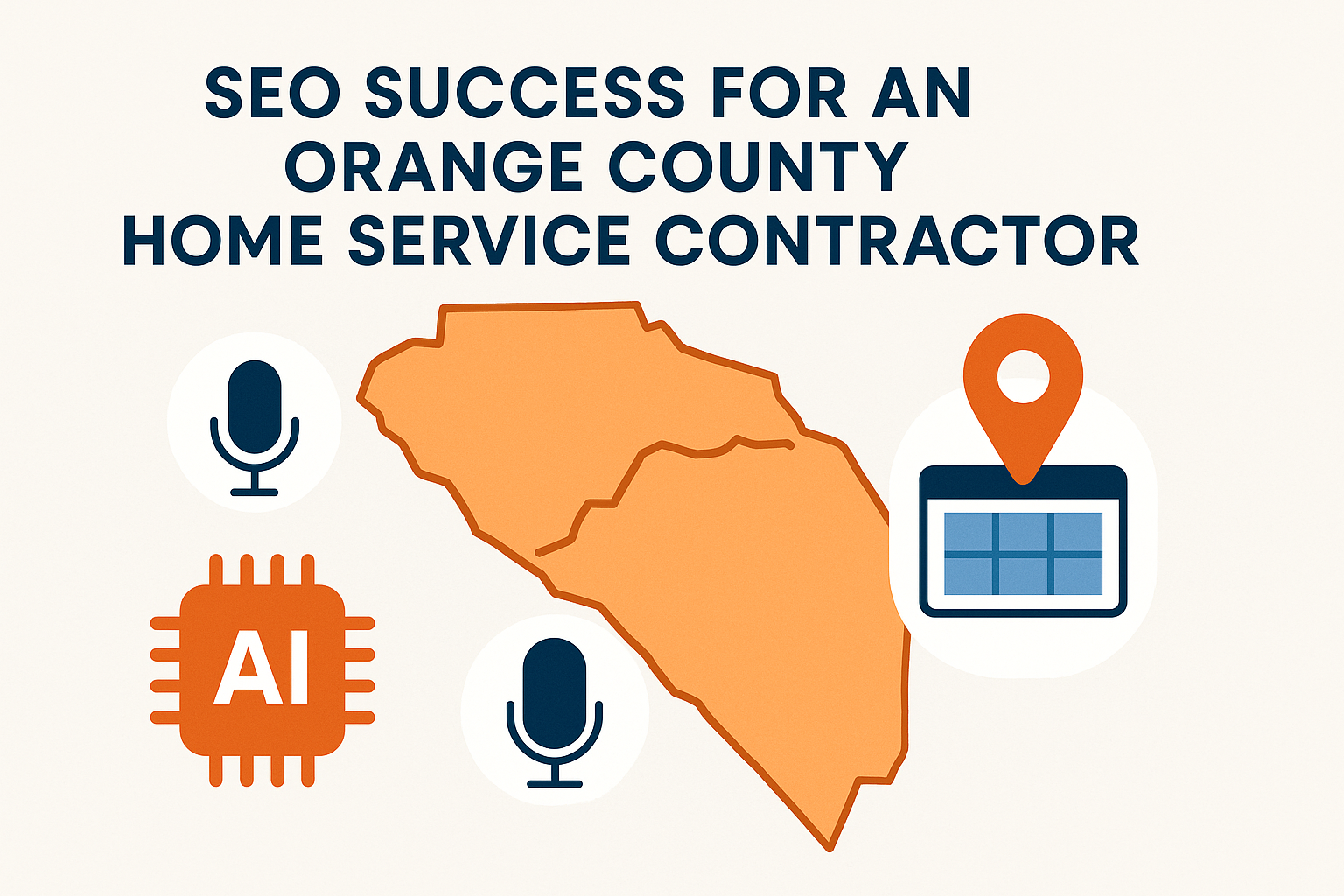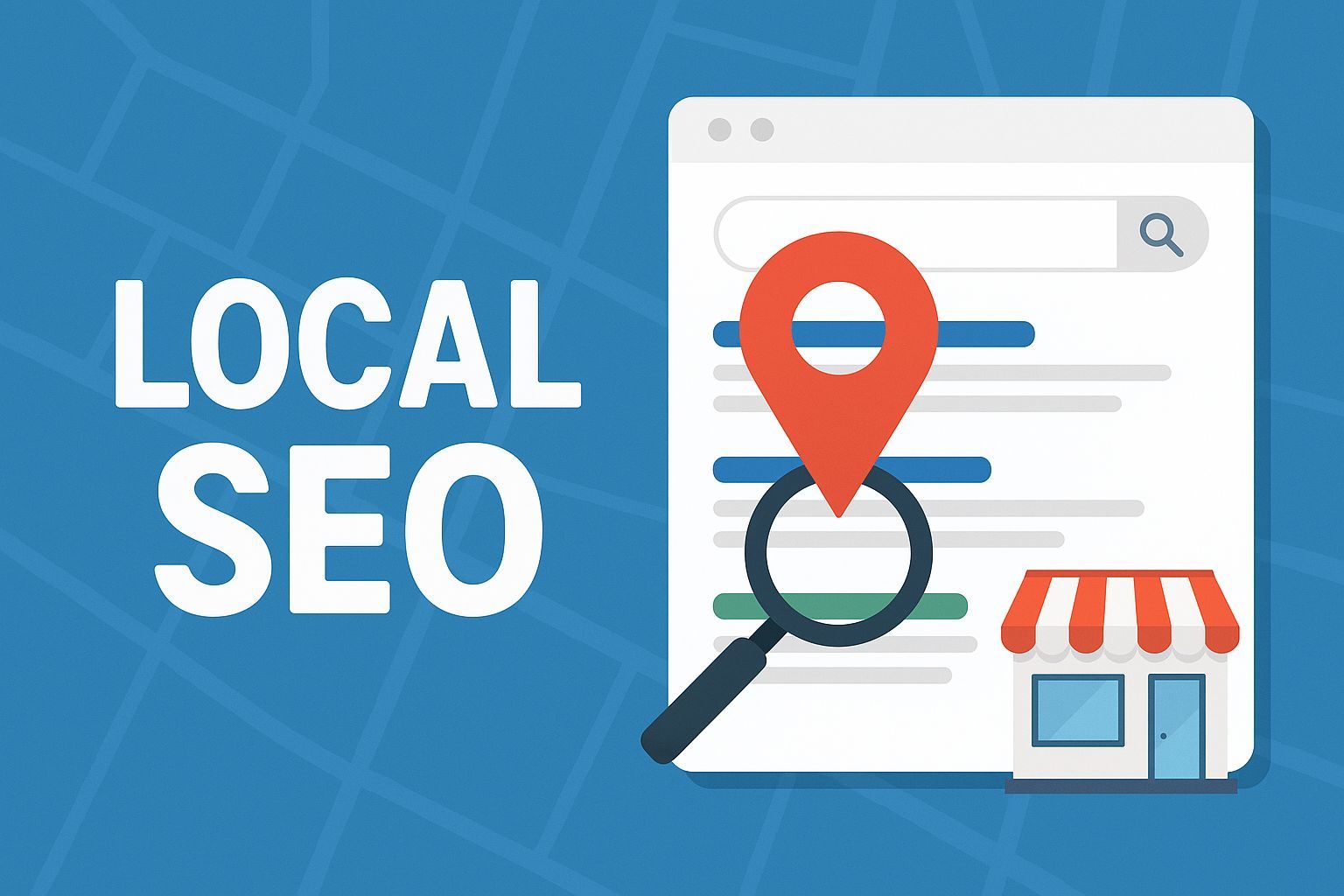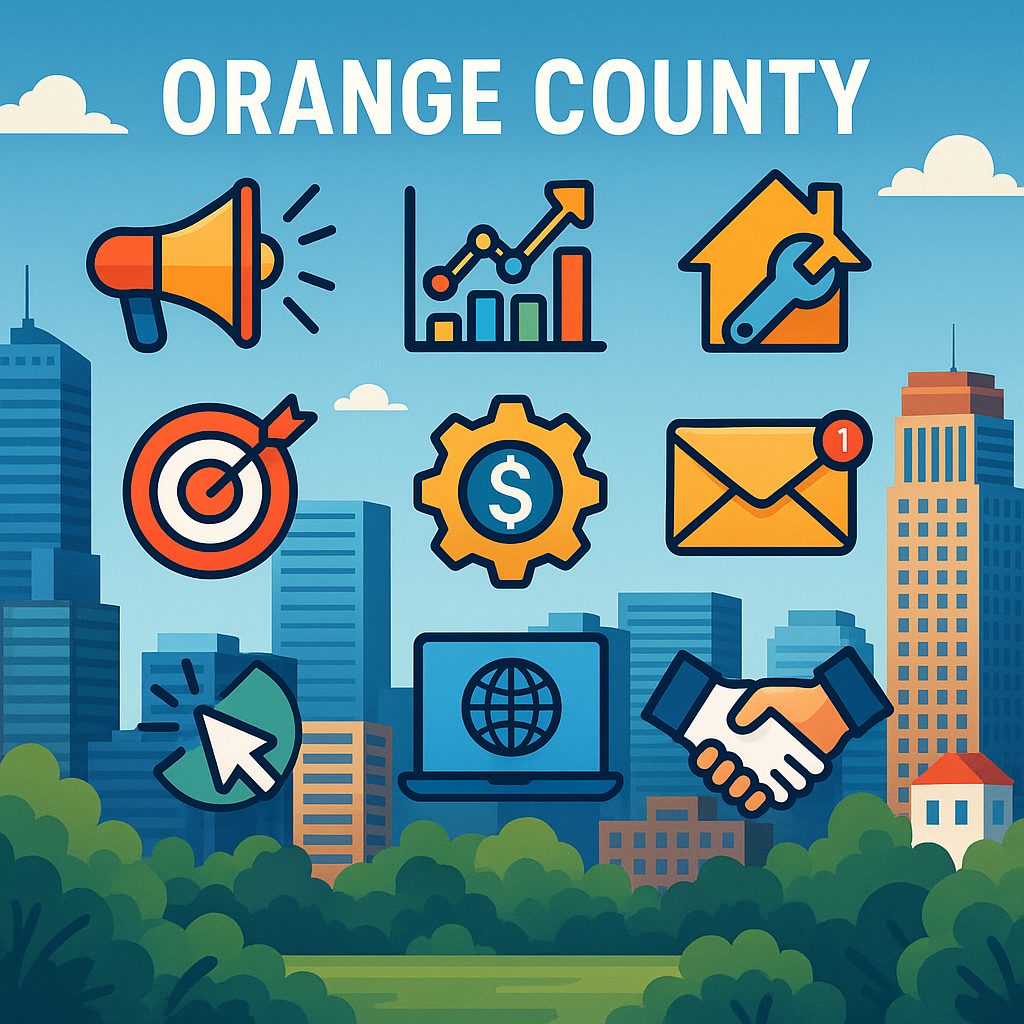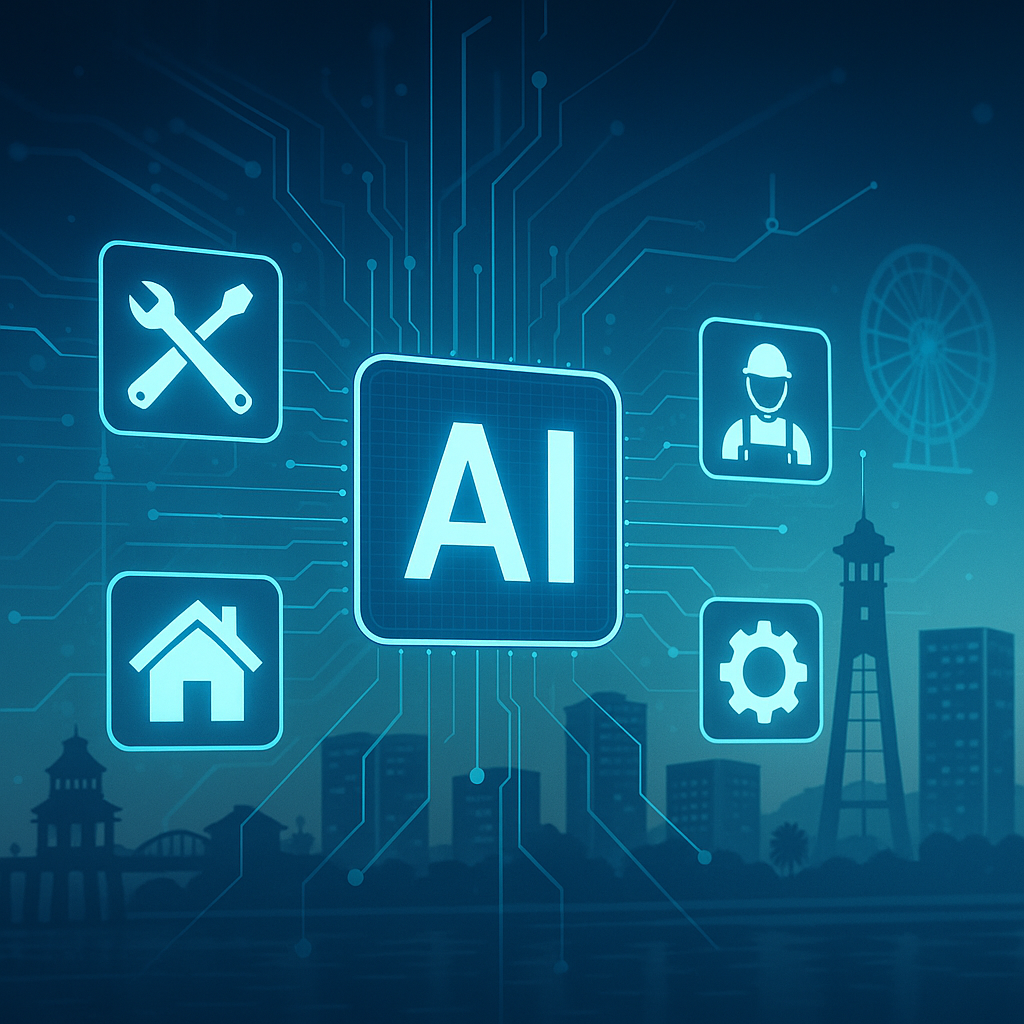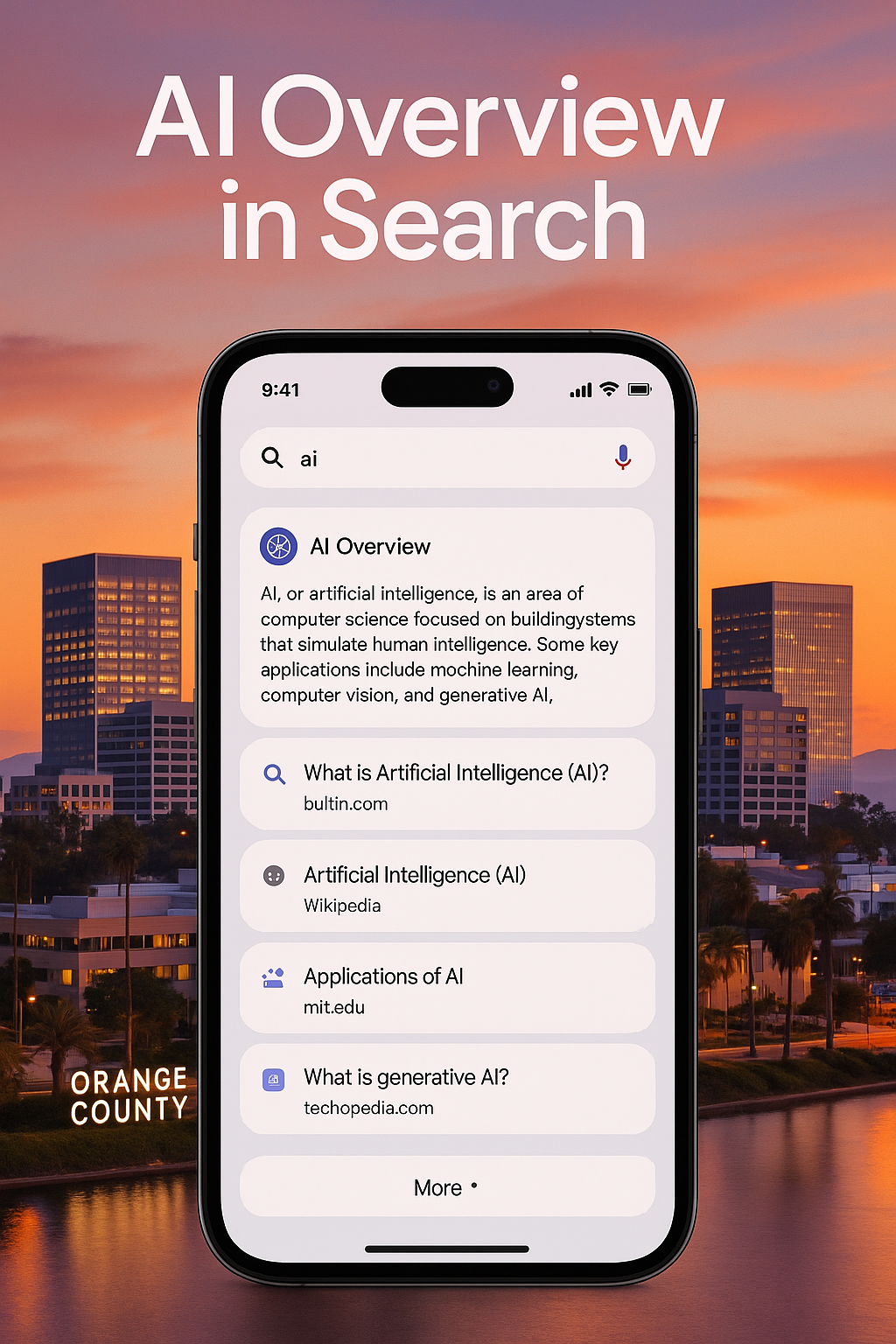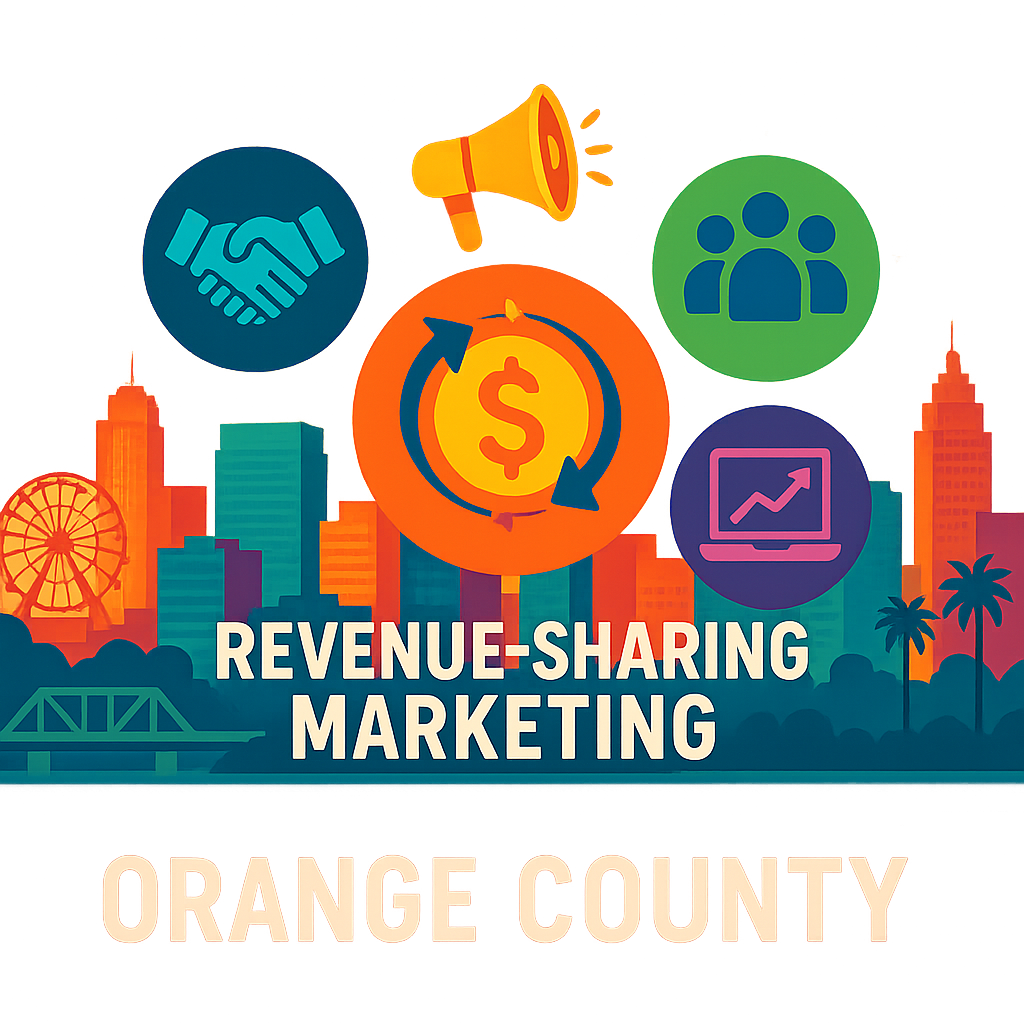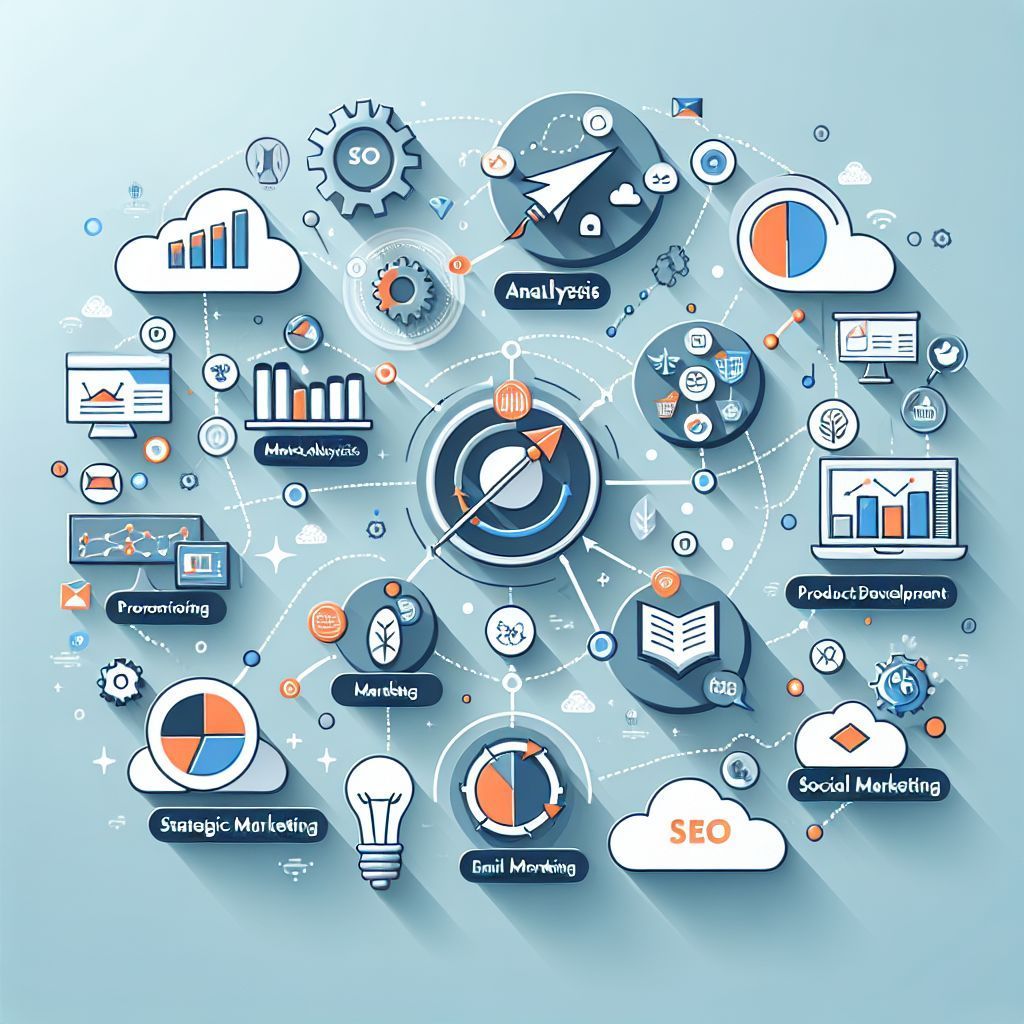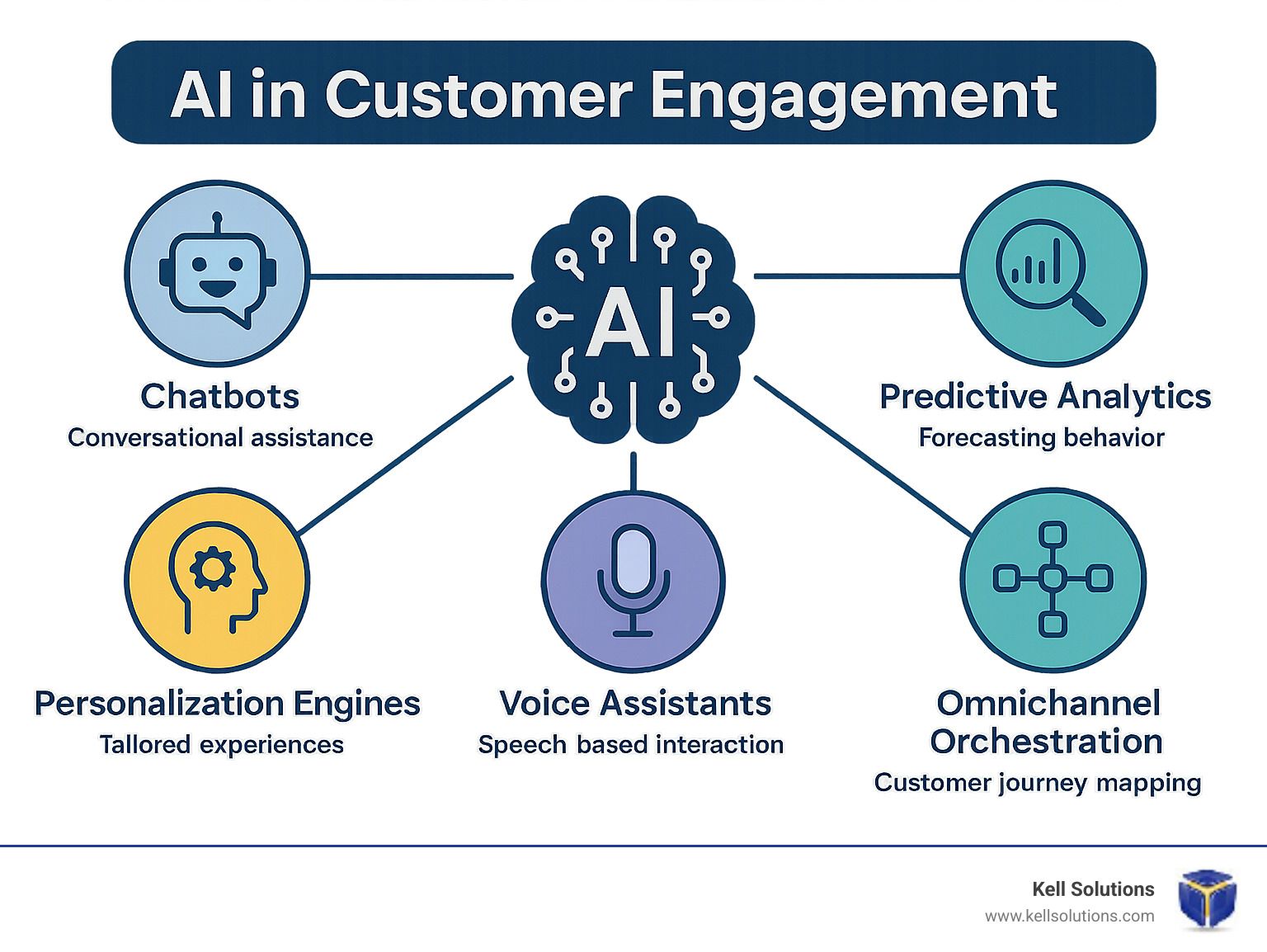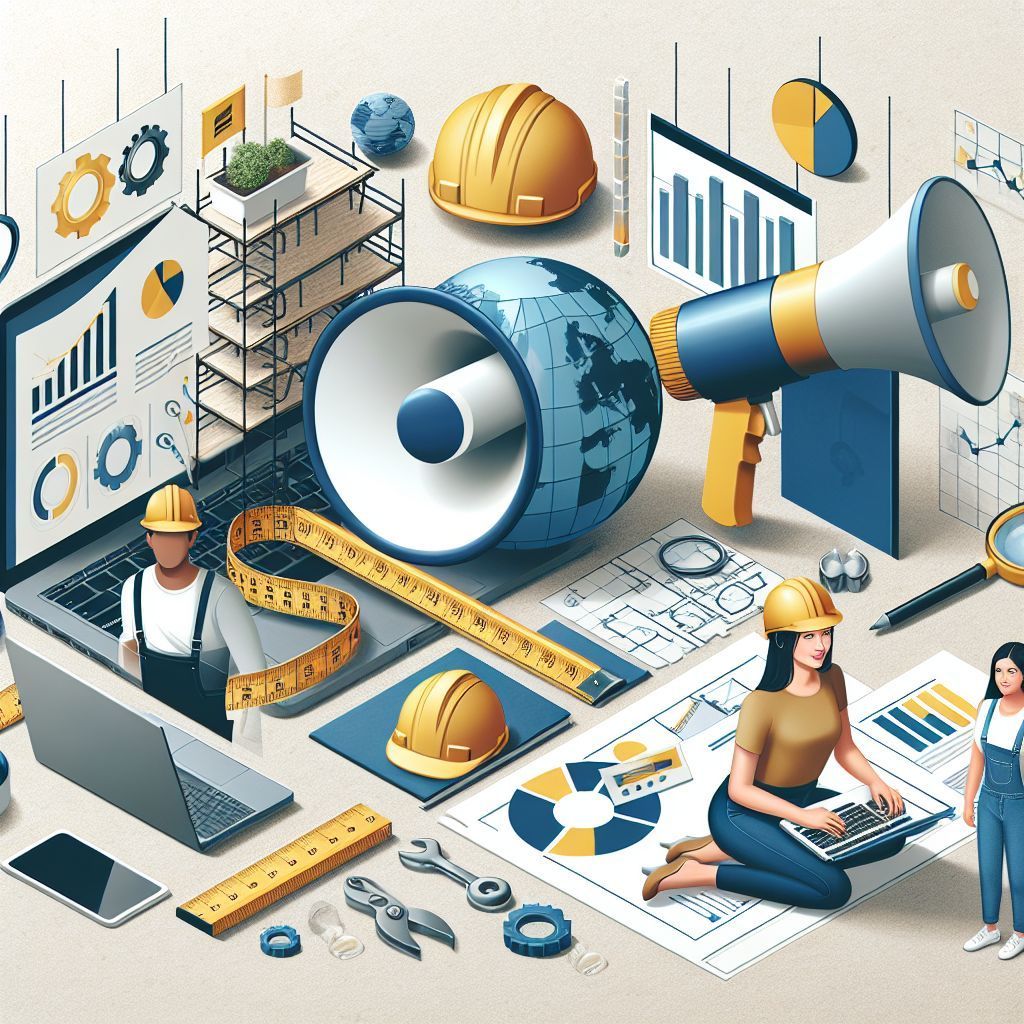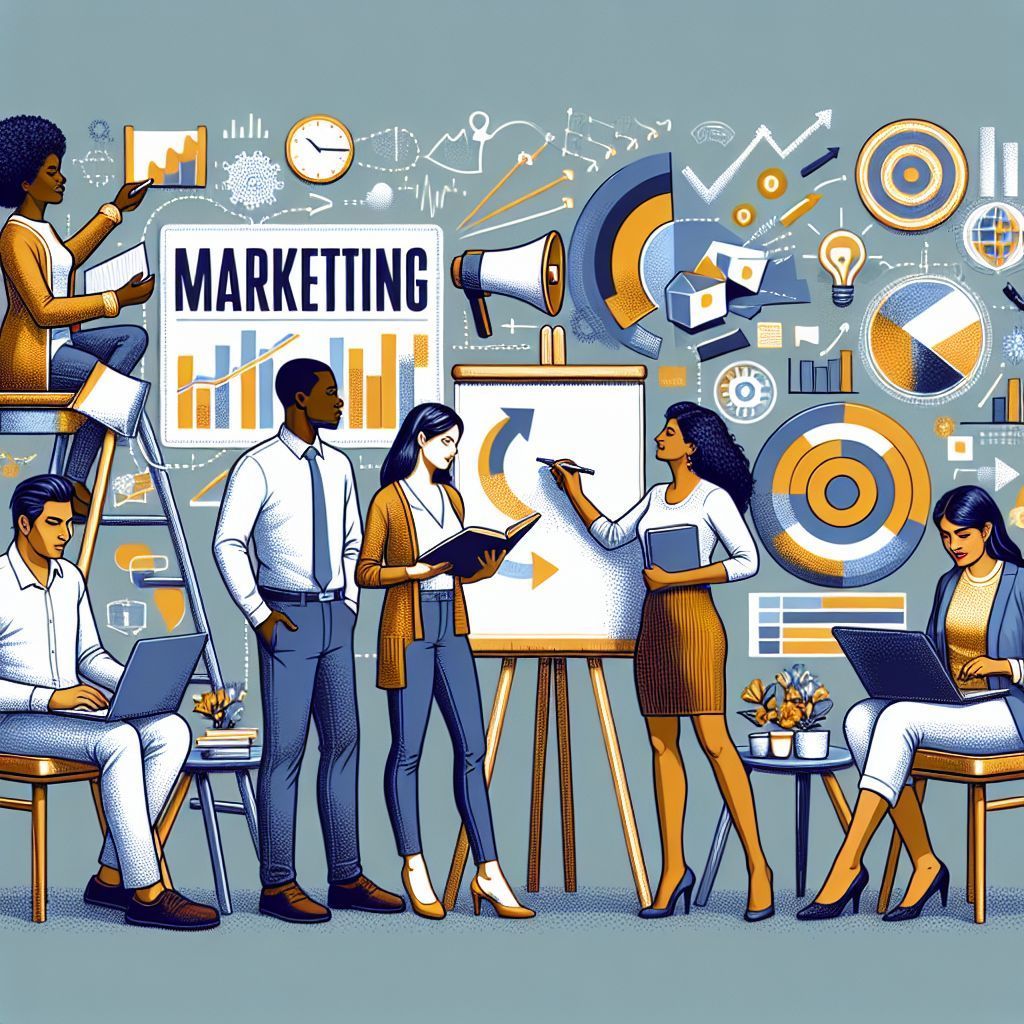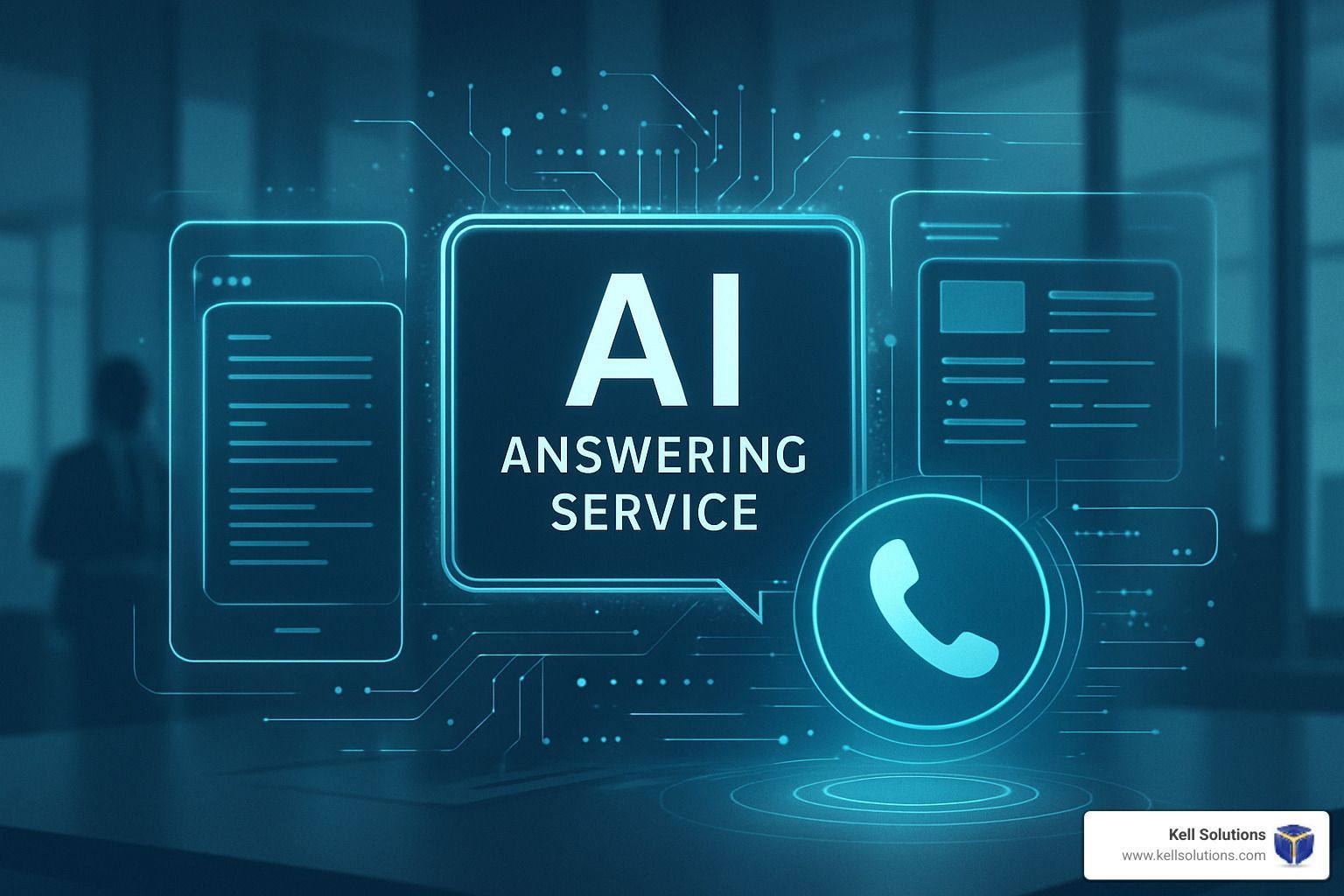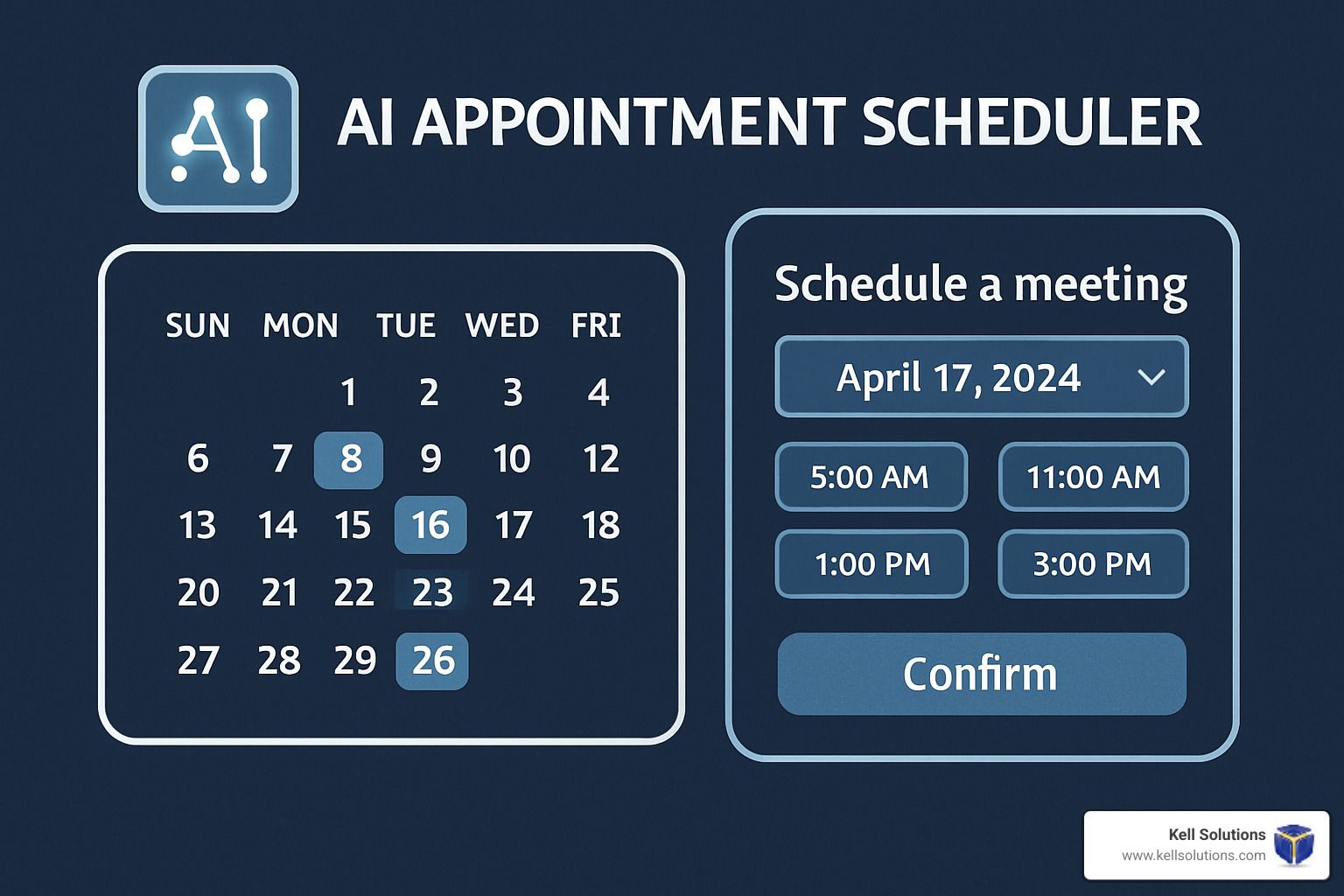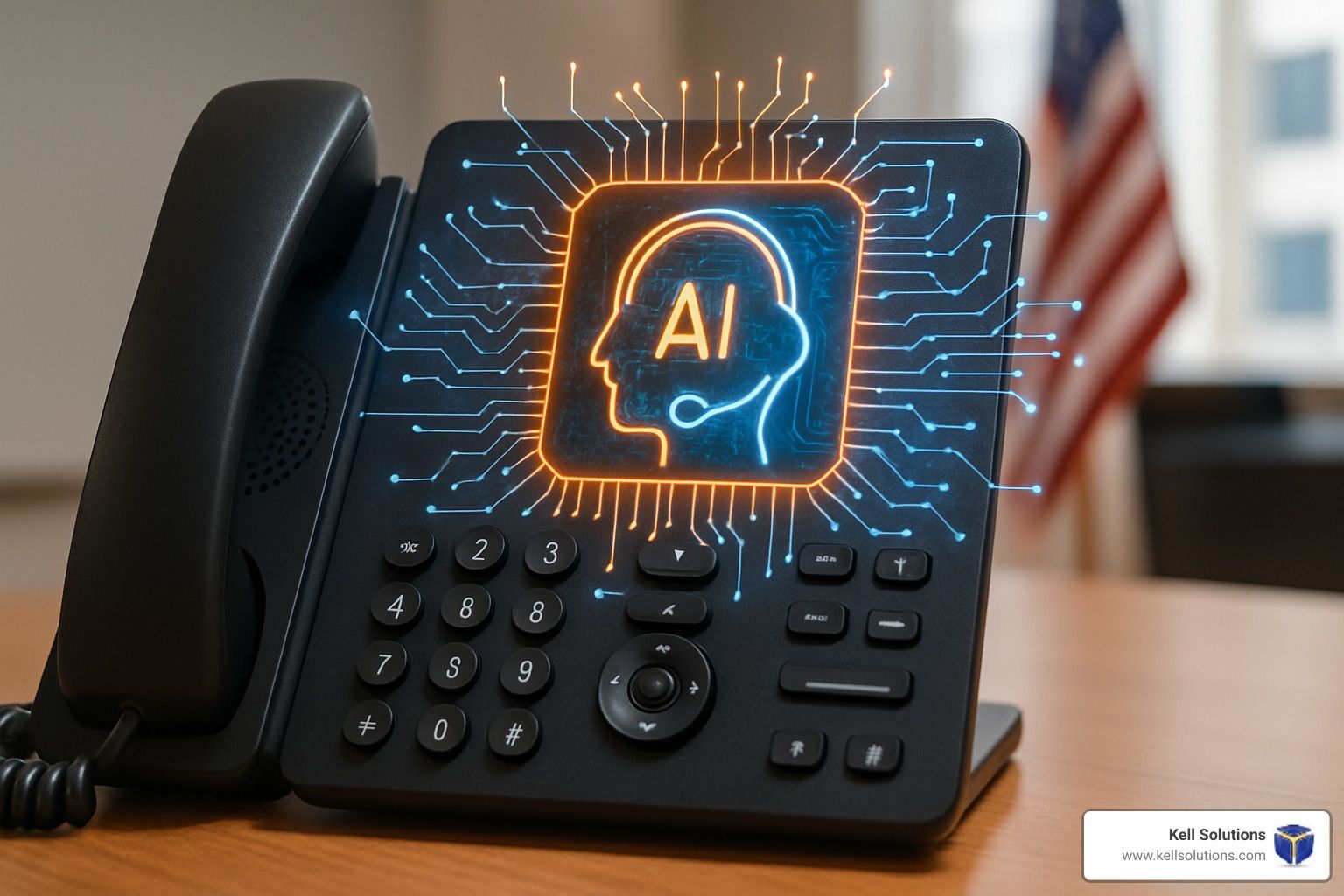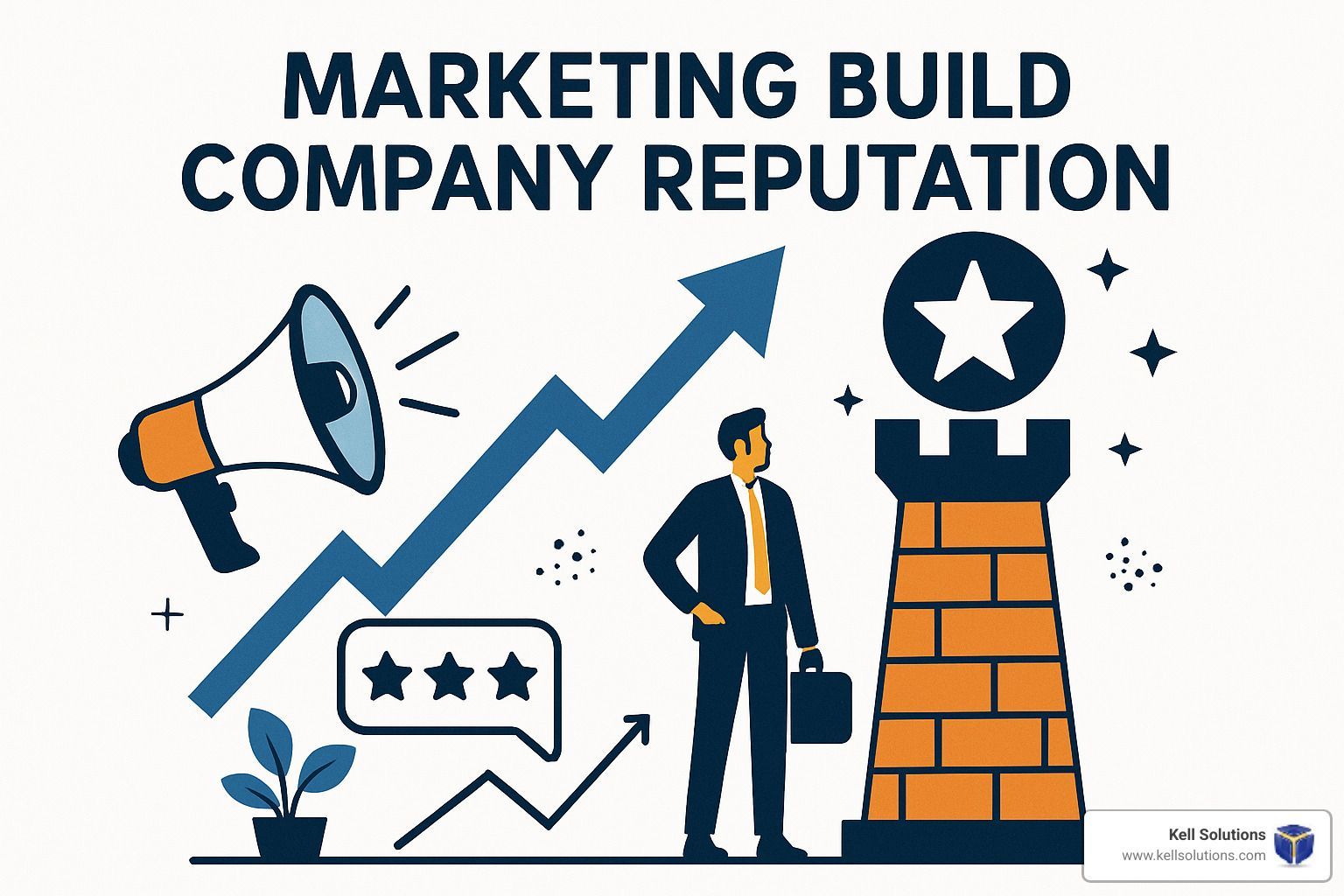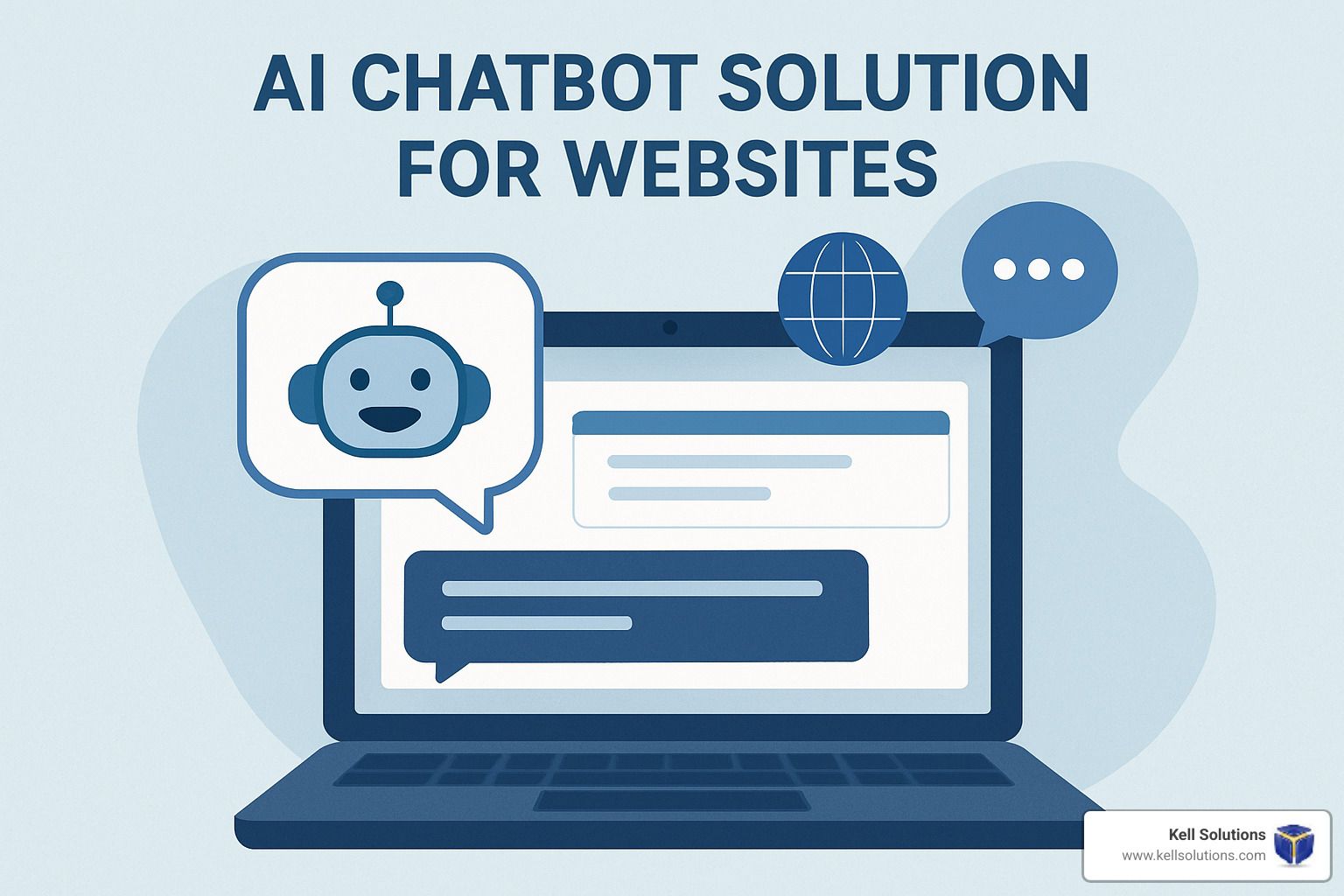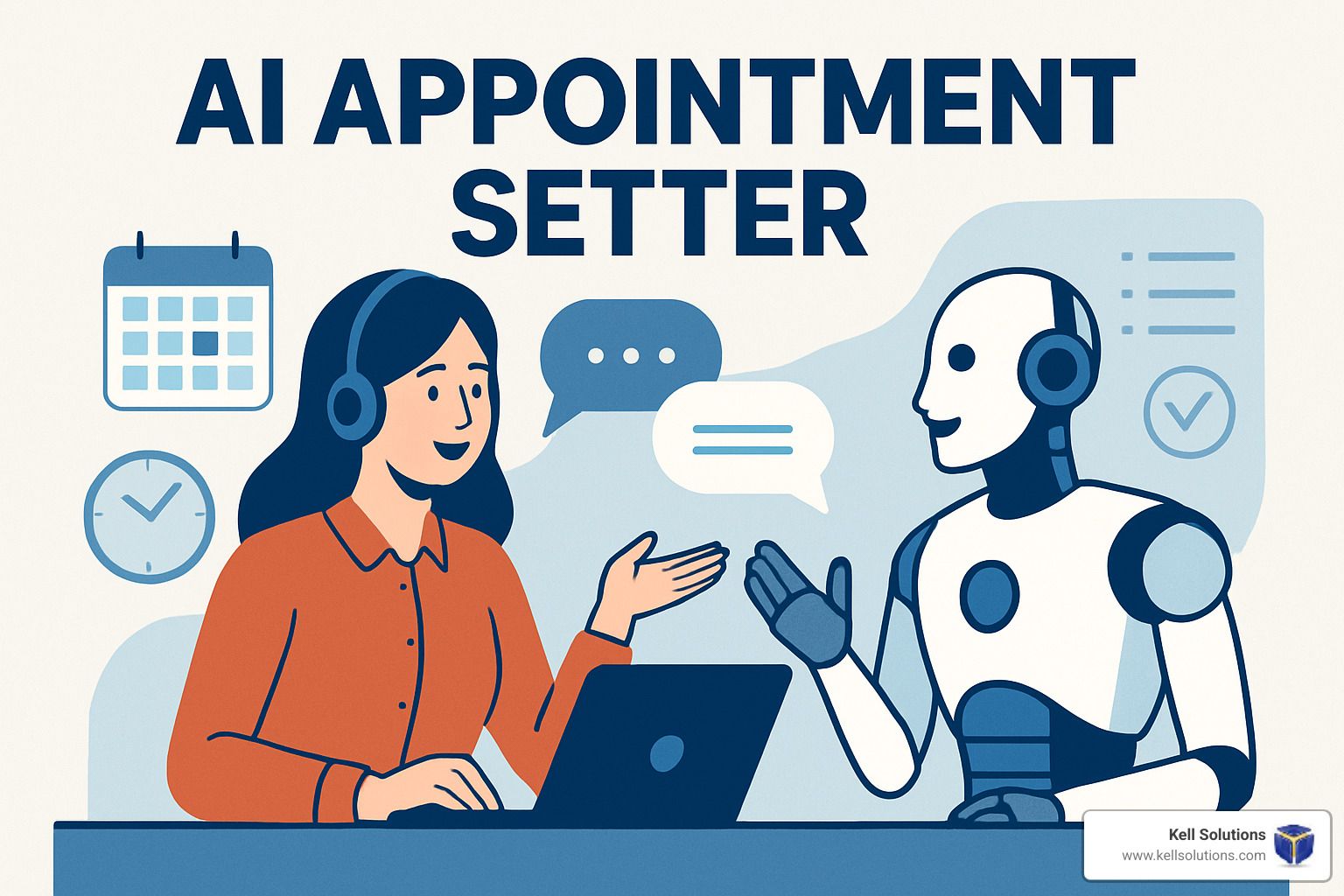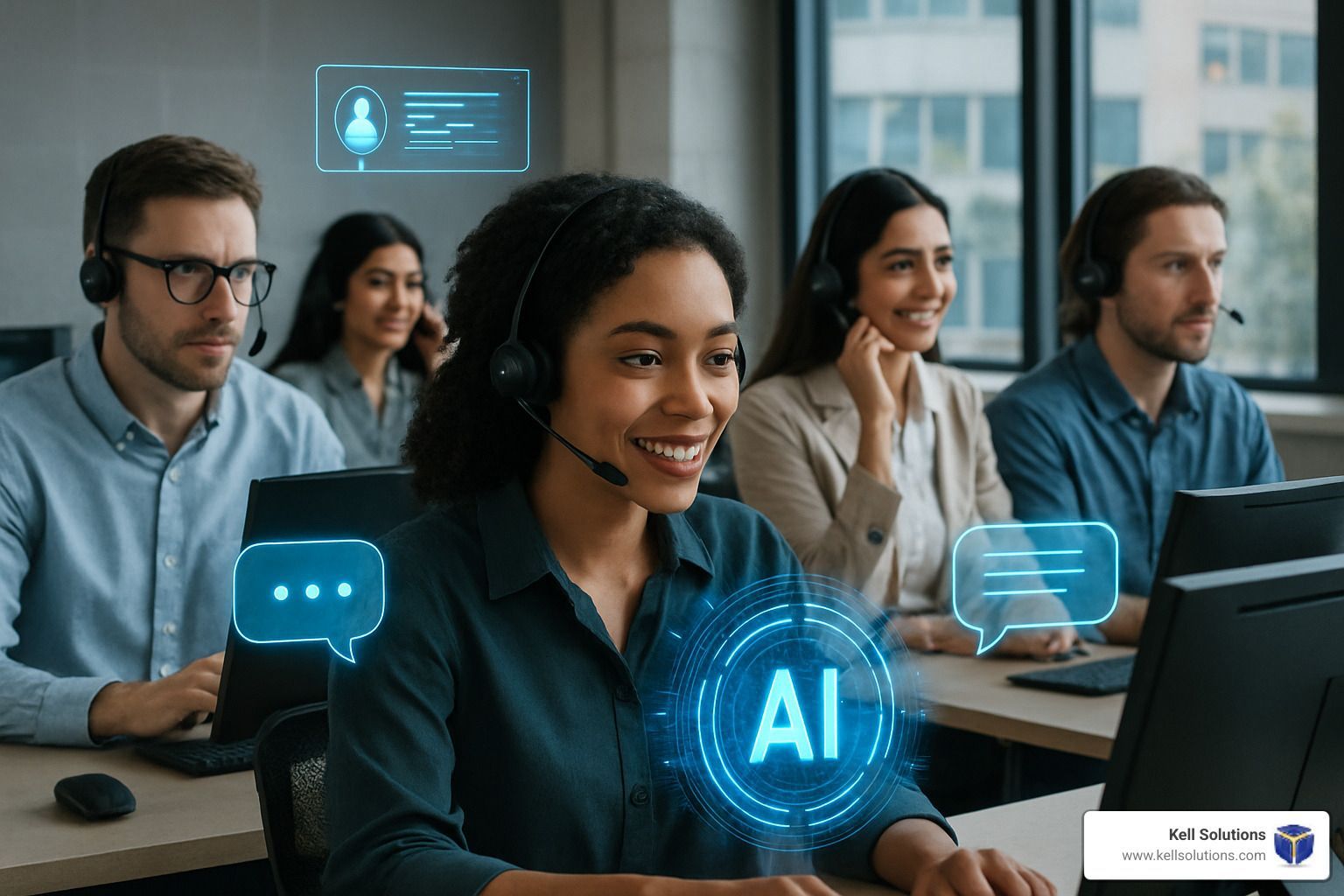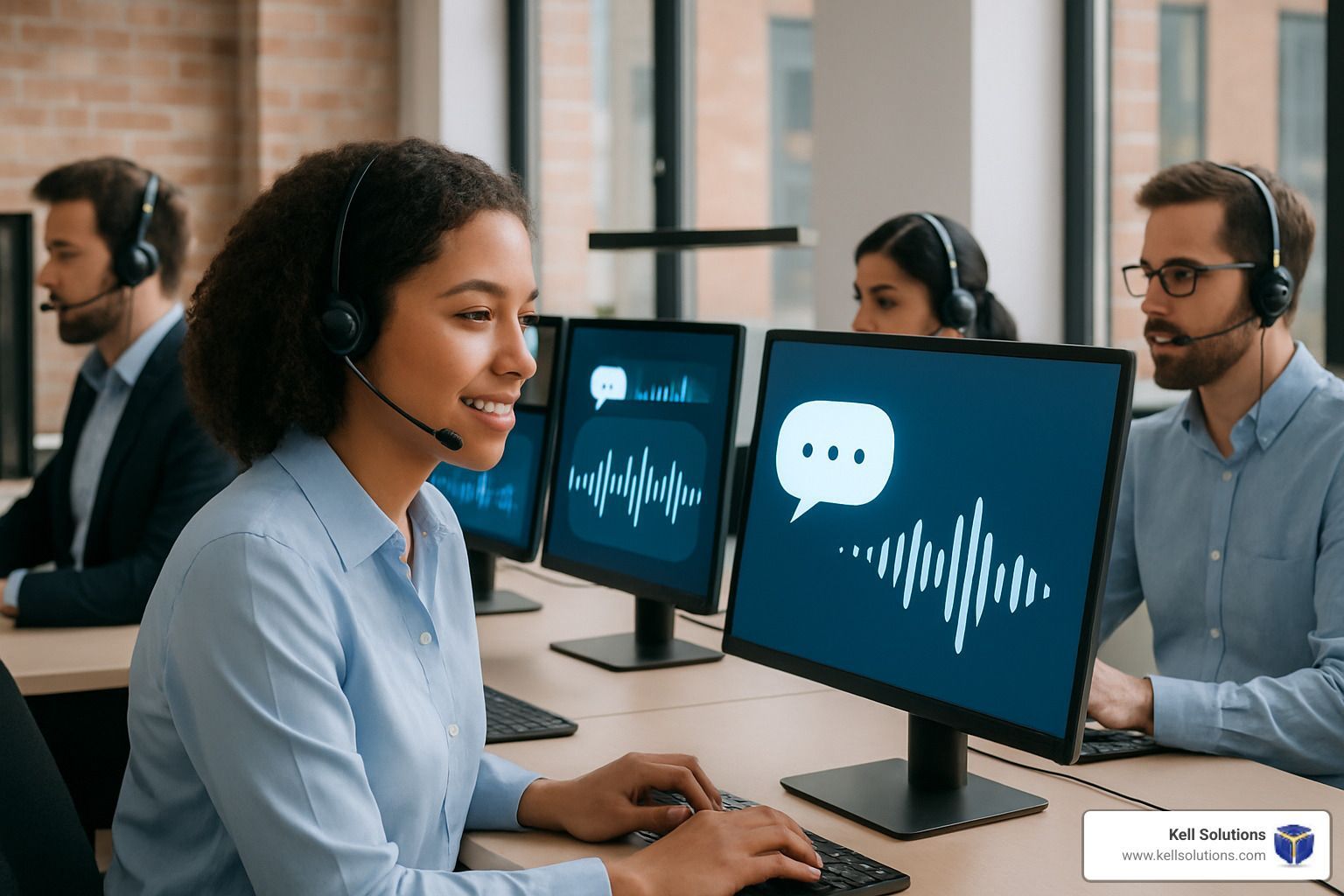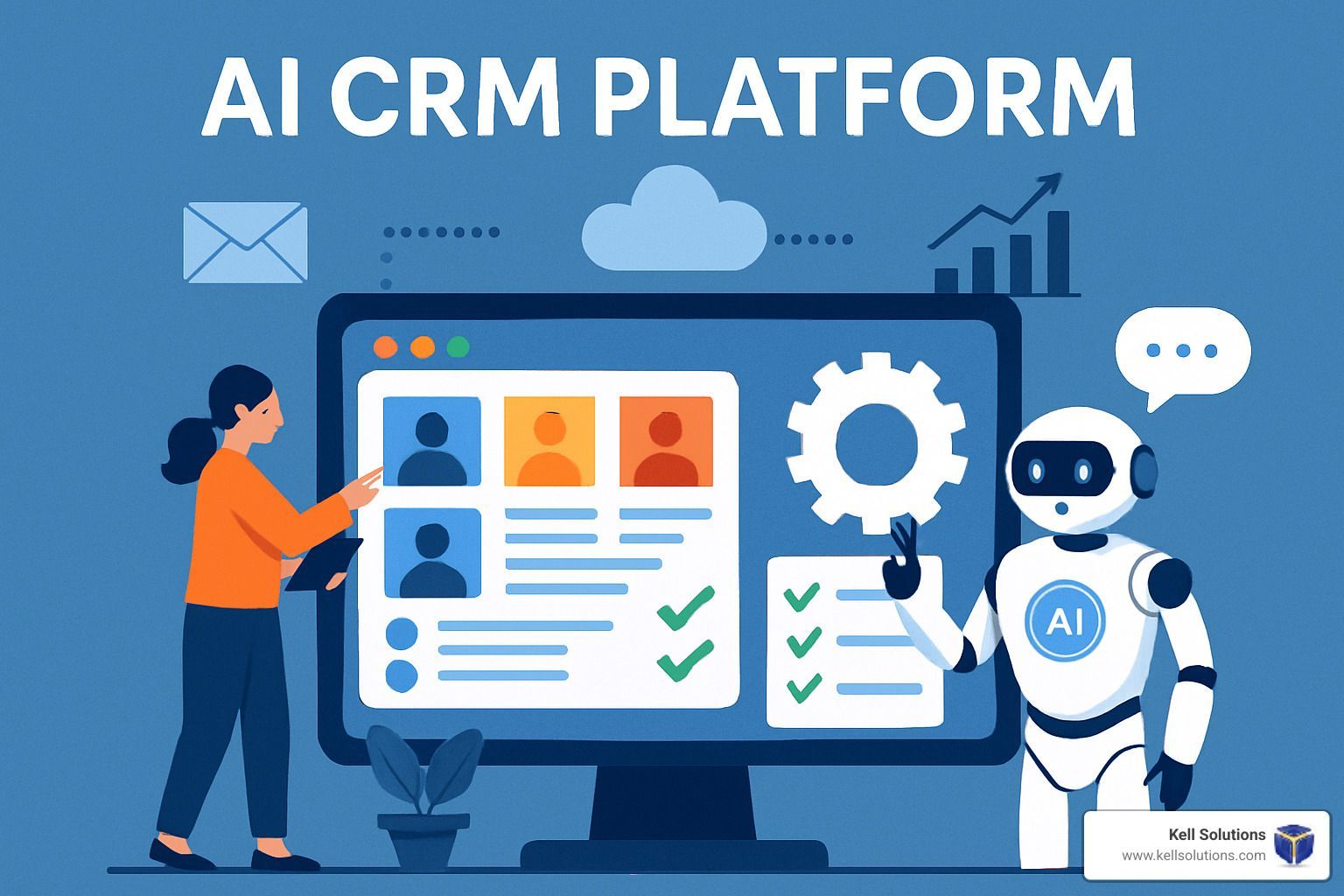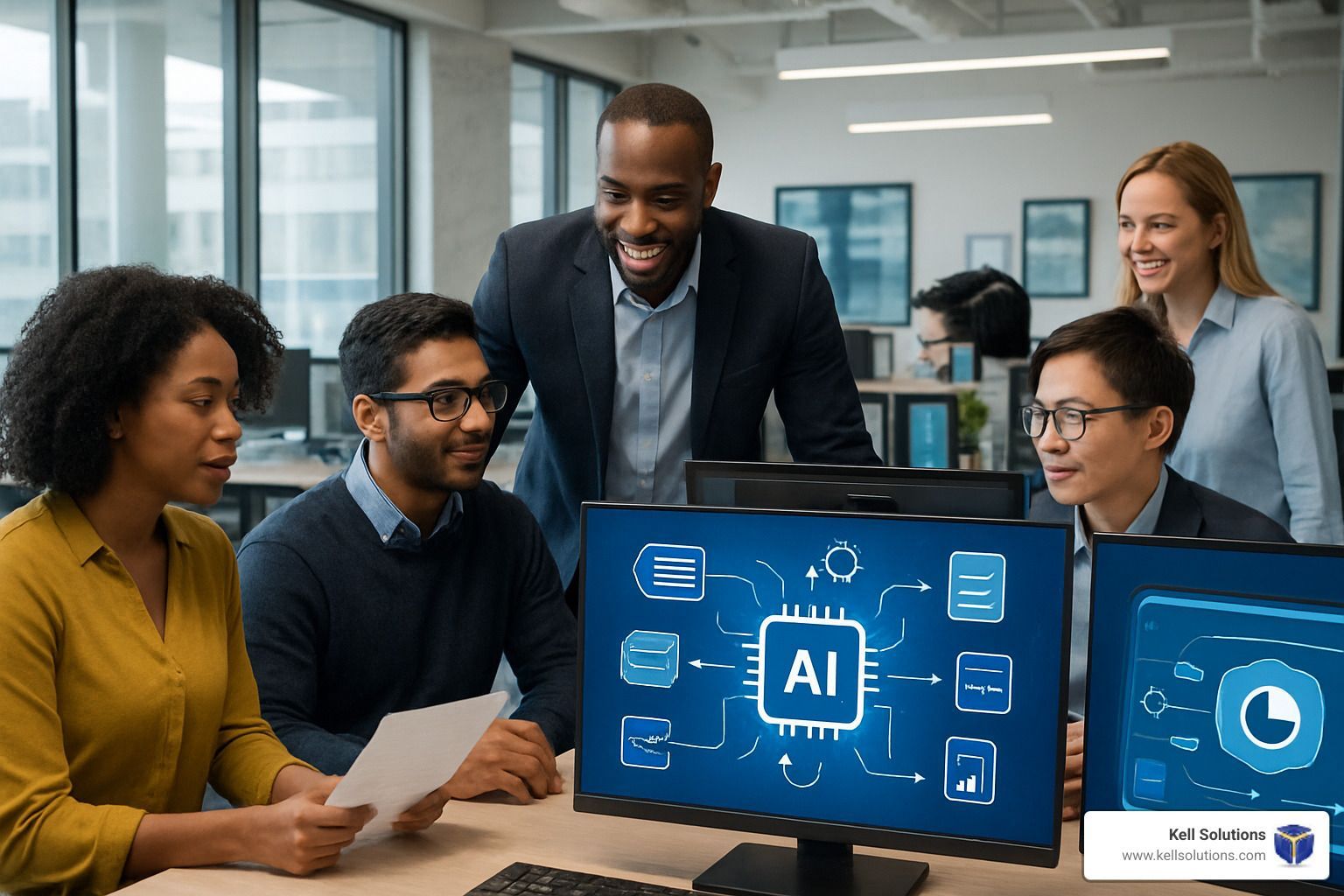AI or Human Receptionist: Comparison Guide for Local Services Providers
AI vs. Human Receptionists: Weighing the Pros, Cons, and Costs for Local Service Providers

Key Takeaways
- AI receptionists can save local service providers over $40,000 annually while operating 24/7, addressing the expectation of 51% of customers for round-the-clock availability.
- Human receptionists excel in complex problem-solving, emotional intelligence, and handling sensitive information that AI systems currently cannot match.
- Businesses implementing AI receptionists report staff reclaiming 5+ hours weekly to focus on high-value tasks, resulting in improved employee satisfaction.
- A hybrid approach combining AI efficiency with human touch points provides the optimal balance for most local service businesses.
- VoiceGenie AI offers local service providers a seamless transition to AI reception with natural language processing that customers often mistake for human interaction.
Local service providers face a critical choice in today's competitive marketplace: stick with traditional human receptionists or embrace AI-powered alternatives. This decision impacts everything from customer satisfaction to your bottom line. With customer expectations constantly rising and 51% of people now expecting businesses to be available 24/7, the stakes couldn't be higher for making the right choice.
VoiceGenie AI has been at the forefront of revolutionizing how local service businesses handle customer communications, allowing companies to deliver exceptional service while dramatically reducing operational costs. The right reception solution acts as the foundation for your entire customer experience, determining whether leads convert or disappear to competitors.
The Customer Service Revolution: AI vs Human Receptionists
The traditional receptionist role has evolved dramatically over the past decade. Once focused primarily on answering phones and greeting visitors, today's front-line customer service representatives manage complex scheduling systems, capture essential customer information, and serve as the first impression of your business. AI receptionists have emerged as viable alternatives, offering 24/7 availability, cost efficiency, and seamless integration with business systems.
Industry analysts predict explosive growth in AI receptionist adoption, with 85% of customer interactions projected to be managed without human agents by 2025. This shift reflects both the growing capabilities of AI technology and the economic realities facing local service providers. The question is no longer whether AI will transform reception duties, but how quickly businesses will adapt to this new reality.
Why Local Service Providers Are Switching to AI Receptionists
The benefits driving AI receptionist adoption extend far beyond simple cost savings. Local service providers implementing AI reception systems report significant improvements across multiple business metrics, creating compelling reasons to make the switch.
24/7 Availability Increases Customer Satisfaction
Customer expectations have fundamentally changed. When potential clients need service, they expect immediate response—regardless of time or day. AI receptionists eliminate the constraints of business hours, ensuring every call receives professional handling at 3 PM or 3 AM. This round-the-clock availability creates a significant competitive advantage for service providers operating in markets where customers increasingly make decisions based on responsiveness.
For emergency-focused businesses like plumbers, HVAC services, and property maintenance companies, 24/7 AI reception capabilities transform their ability to capture urgent service requests that would otherwise go to competitors. The ability to respond immediately to customer needs, even during non-business hours, directly translates to increased customer loyalty and higher lifetime value.
$40,000+ Annual Cost Savings Compared to Human Staff
The financial impact of switching to AI reception solutions creates compelling economics for local service providers. When accounting for salary, benefits, training, management oversight, and physical workspace, a single human receptionist typically costs businesses $40,000-$65,000 annually. By contrast, AI reception solutions generally range from $200-$500 monthly, representing savings of 85-95% compared to human alternatives.
$40,000+ Annual Cost Savings Compared to Human Staff
The financial impact of switching to AI reception solutions creates compelling economics for local service providers. When accounting for salary, benefits, training, management oversight, and physical workspace, a single human receptionist typically costs businesses $40,000-$65,000 annually. By contrast, AI reception solutions generally range from $200-$500 monthly, representing savings of 85-95% compared to human alternatives.
These cost savings become even more significant when considering the 24/7 coverage provided by AI systems. To achieve round-the-clock human coverage would require multiple staff members and significantly higher expenses. For small to medium service providers operating on thin margins, this cost differential often represents the difference between profitability and financial struggle.
20% Revenue Improvement Through Better Lead Conversion
Beyond cost savings, AI receptionists deliver measurable revenue improvements through enhanced lead capture and conversion. Research indicates that businesses implementing AI reception systems experience an average 20% increase in service bookings and appointments. This improvement stems from eliminating missed calls, reducing response times, and providing consistent information delivery to potential customers.
The financial impact becomes even more significant when considering that 85% of customers who can't reach a business on their first attempt will not call back. Each missed opportunity represents lost revenue that compounds over time. AI receptionists effectively eliminate this leakage point in the sales funnel, capturing every potential opportunity regardless of when it arrives.
5+ Hours Weekly Staff Time Redirected to High-Value Tasks
Productivity gains represent another significant benefit driving AI receptionist adoption. Business owners implementing AI reception systems report recovering more than 5 hours weekly that was previously spent handling routine calls and inquiries. This time redirection allows business owners and key staff members to focus on service delivery, customer relationship management, and strategic growth initiatives.
The psychological benefits also prove substantial. By eliminating the constant interruption of incoming calls, staff members achieve deeper focus on complex tasks, resulting in improved work quality and job satisfaction. This productivity enhancement creates a compounding effect that extends far beyond the reception function itself.
What Human Receptionists Still Do Better
While AI receptionists offer compelling advantages, human receptionists still excel in several critical areas that AI has yet to fully master. Understanding these differences helps businesses identify whether a human receptionist, AI solution, or hybrid approach best serves their specific needs.
Complex Problem-Solving for Unique Customer Situations
Human receptionists demonstrate superior abilities when handling non-standard requests or situations requiring creative problem-solving. When a customer presents a unique scenario that falls outside normal operating parameters, human staff can improvise solutions, navigate exceptions, and apply judgment in ways that current AI systems cannot match.
This advantage becomes particularly relevant for service businesses dealing with complex scheduling requirements, custom service packages, or situations requiring negotiation. Human receptionists can interpret nuance, read between the lines of customer requests, and identify unstated needs that might otherwise go unaddressed. Local service providers face a critical decision in today's competitive marketplace: should they invest in AI or human receptionists to manage these tasks effectively?
Consider a scenario where a customer needs emergency service but doesn't explicitly state the urgency. Human receptionists often detect subtle cues in voice tone or word choice that signal the true priority level, allowing appropriate escalation. Current AI systems, while improving rapidly, still struggle with this level of perception.
Emotional Intelligence and Relationship Building
The ability to establish genuine human connections remains a significant advantage for human receptionists. For service businesses where relationship building forms a core competitive advantage, the warmth, empathy, and authentic interaction provided by human staff creates meaningful differentiation that impacts customer loyalty and lifetime value.
Particularly in high-stress or emotionally charged situations, human receptionists can provide reassurance, demonstrate empathy, and adjust their communication style to match customer needs. This emotional intelligence becomes especially valuable in businesses dealing with sensitive matters like healthcare, legal services, or emergency response.
- Genuine empathy for customer frustrations or concerns
- Ability to detect and respond to emotional cues
- Natural rapport building through shared experiences
- Authentic emotional support during difficult situations
- Cultural and social awareness that adapts to diverse customers
Handling Sensitive or Confidential Information
For service businesses dealing with highly sensitive or confidential information, human receptionists often provide greater perceived security and trust. While AI systems employ robust security measures, many customers still prefer human interaction when sharing sensitive personal, financial, or medical information, particularly older demographic groups or those with privacy concerns.
Direct Cost Comparison: AI vs Human Receptionist
Making an informed decision requires understanding the full cost implications of both options. The financial differences between AI and human receptionists extend far beyond base subscription or salary expenses, encompassing numerous direct and indirect costs that impact your bottom line. Local service providers face a critical decision in today's competitive marketplace: should they invest in AI or human receptionists?
Training and Management Costs
Human receptionists require significant onboarding investment before reaching full productivity. The average receptionist needs 4-6 weeks of training before handling calls independently, representing substantial hidden costs in training time, reduced productivity, and management oversight. This investment must be repeated with each new hire, creating an ongoing expense cycle as staff turnover occurs.
Beyond initial training, human receptionists require continuous management attention to maintain performance standards, address challenges, and provide ongoing development. Business owners report spending 3-5 hours weekly supervising reception staff, representing opportunity costs that rarely appear in formal budget calculations.
By contrast, AI receptionists typically require only 1-2 hours of initial setup and occasional fine-tuning as business needs evolve. The systems learn and improve automatically based on interactions, eliminating the need for ongoing training investment and reducing management overhead to minimal levels.
- Human receptionist: 4-6 weeks initial training plus ongoing supervision
- AI receptionist: 1-2 hours setup with minimal maintenance
- Management time: 3-5 hours weekly for human staff vs. minutes for AI
- Retraining costs: Repeated with each new hire for humans, unnecessary for AI
Salary and Benefits vs Subscription Fees
The most obvious cost difference comes from comparing direct compensation expenses. Human receptionists require salaries ranging from $30,000-$45,000 annually for full-time positions, plus an additional 20-30% in benefits including health insurance, paid time off, retirement contributions, and employment taxes. These fixed costs remain regardless of call volume or seasonal business fluctuations.
AI reception solutions, by contrast, operate on subscription models typically ranging from $200-$500 monthly depending on features and call volume. This represents approximately 85-95% cost reduction compared to human alternatives while providing expanded coverage hours. For businesses with moderate call volumes, the annual savings typically exceed $40,000 - capital that can be reinvested in growth initiatives or service improvements.
Cost Comparison: Human vs. AI Receptionist (Annual)
Human Receptionist: $45,000 (salary) + $13,500 (benefits) = $58,500
AI Receptionist: $300/month × 12 = $3,600
Annual Savings: $54,900 (94% reduction)
Scaling Expenses as Your Business Grows
As service businesses grow, reception needs increase proportionally - creating dramatically different cost trajectories depending on your solution. Human reception capacity has distinct limitations, with most receptionists able to handle 50-75 calls daily before quality and responsiveness deteriorate. Expanding beyond this capacity requires additional staff, creating step-function cost increases that can strain growing businesses.
AI reception systems scale much more efficiently, with most platforms accommodating growing call volumes through tiered pricing models that increase gradually rather than in large steps. This scalability allows businesses to match reception capacity precisely to current needs without overspending during growth phases or seasonal fluctuations.
Hidden Costs: Sick Days, Turnover, and Quality Issues
The financial equation becomes even more favorable for AI solutions when accounting for hidden costs associated with human staff. Receptionist positions experience 30-40% annual turnover in many service industries, creating repetitive recruitment, hiring, and training expenses. Each transition period also typically results in missed calls, scheduling errors, and reduced customer satisfaction.
Additionally, human receptionists average 7-9 sick days annually plus vacation time, requiring coverage arrangements that often result in service inconsistency or additional expense. AI systems eliminate these variables entirely, providing consistent performance without interruption regardless of circumstances.
Best Industries for AI Receptionist Adoption
While AI reception solutions deliver benefits across virtually all service sectors, certain industries demonstrate particularly strong returns on implementation. The specific operational characteristics of these businesses align perfectly with AI capabilities, creating exceptional value.
1. Home Services and Contractors
HVAC contractors, plumbers, electricians, and other home service providers gain tremendous advantage from AI receptionists. These businesses often receive urgent service requests outside standard business hours, with each missed call representing substantial lost revenue opportunity. The ability to capture emergency service requests 24/7 while field technicians focus on service delivery creates immediate revenue improvements and competitive differentiation.
The seasonal nature of many home services also makes AI reception particularly valuable, as these businesses can accommodate peak season call volumes without staffing challenges during slower periods. The appointment-focused nature of these businesses aligns perfectly with AI scheduling capabilities.
2. Professional Services (Legal, Accounting, Consulting)
Professional service providers benefit significantly from AI reception systems, particularly for initial client inquiries and appointment scheduling. The predictable nature of most professional service interactions makes them ideal for AI handling, while the high value of new client acquisition justifies implementation. For practices billing at $150-$400 hourly, each additional consultation booked through improved reception coverage delivers substantial revenue impact.
The ability to capture potential client information during evening hours when many individuals make personal calls provides particular advantage. AI systems excel at qualifying prospects and scheduling initial consultations, creating a consistent pipeline of opportunities that might otherwise be missed.
3. Healthcare Providers
Medical practices, dental offices, chiropractic clinics, and similar healthcare providers find exceptional value in AI reception. The high volume of routine scheduling, rescheduling, and basic information requests creates significant administrative burden that AI handles efficiently. With average call handling times of 3-5 minutes for basic appointments, practices can redirect thousands of staff hours annually toward patient care.
The ability to handle after-hours symptom triage through decision-tree protocols represents another significant advantage, allowing appropriate escalation for urgent situations while scheduling routine visits efficiently. This capability improves both patient satisfaction and practice efficiency.
4. Real Estate and Property Management
Real estate agencies and property management companies deal with high inquiry volumes that follow unpredictable patterns. Potential buyers and renters often make contact outside business hours when existing properties trigger interest. AI receptionists capture these opportunities regardless of timing, qualifying prospects and scheduling showings automatically.
For property management companies, the ability to handle routine maintenance requests, payment inquiries, and scheduling through AI systems creates significant operational efficiency. The consistent information delivery also ensures compliance with fair housing regulations and documentation requirements.
5. Retail and Local Shops
Retail businesses benefit from AI reception through improved customer service coverage during peak periods when in-store staff focus on present customers. The ability to handle product availability inquiries, store hours questions, and basic information requests through AI channels reduces interruptions while ensuring consistent information delivery.
For specialty retailers, the appointment-setting capabilities of AI receptionists create particular value for consultation services, custom fittings, or exclusive shopping experiences. These high-value interactions benefit from proper scheduling and preparation that AI systems facilitate efficiently.
How to Implement a Hybrid Approach for Maximum Results
Most successful service providers implement hybrid approaches that leverage the strengths of both AI and human receptionists. This balanced strategy optimizes customer experience while maximizing operational efficiency. The key lies in strategic task distribution that plays to the strengths of each solution. Local service providers face a critical decision in today's competitive marketplace: should they invest in AI or human receptionists? For more insights, read our comparison guide.
Task Distribution Between AI and Human Staff
Effective hybrid implementations assign reception tasks based on complexity, value, and customer sensitivity. AI systems excel at handling routine inquiries, scheduling standard appointments, providing basic information, and capturing contact details. These tasks typically represent 70-80% of reception interactions for most service businesses, creating substantial efficiency through automation.
Human staff members focus on complex exceptions, high-value opportunities, and situations requiring empathy or judgment. This targeted approach maximizes the impact of human interaction while ensuring efficient handling of routine matters. The result is higher quality customer service with significantly reduced operational costs. Local service providers face a critical decision in today's competitive marketplace: should they invest in AI or maintain a human touch?
Setting Up Effective Escalation Protocols
Successful hybrid implementations establish clear escalation pathways that transition smoothly between AI and human handling when needed. Effective systems use specific trigger conditions such as customer request, emotional cues, or situation complexity to determine when human intervention would add value. These transitions occur seamlessly from the customer perspective, maintaining service continuity.
The most sophisticated implementations use "warm transfer" protocols where AI systems brief human staff on the situation before connecting, eliminating the frustrating experience of customers repeating information. This approach combines efficiency with exceptional customer experience, creating measurable competitive advantage.
Optimizing Coverage Throughout Business Hours
Strategic coverage planning creates another advantage in hybrid implementations. Many service providers use AI systems for 24/7 baseline coverage, with human staff augmenting during peak business hours or for specific interaction types. This approach ensures consistent response regardless of timing while deploying human resources when they create maximum value.
For businesses with predictable call patterns, AI systems can handle overflow during peak periods, eliminating the frustrating customer experience of long hold times or voicemail. This capability proves particularly valuable for seasonal businesses or those experiencing growth phases where call volumes exceed staff capacity.
Making the Right Choice for Your Local Business
The optimal reception solution depends on your specific business characteristics, customer expectations, and growth objectives. A systematic assessment process helps identify whether AI, human, or hybrid approaches will deliver maximum value for your situation.
Assessment Framework Based on Call Volume and Patterns
Call patterns provide critical insight into reception requirements. Businesses receiving more than 25% of inquiries outside standard business hours benefit substantially from AI solutions that provide 24/7 coverage. Similarly, operations experiencing significant call volume fluctuations throughout the day, week, or seasonally gain advantage from AI's ability to scale instantly without staffing challenges.
Budget Considerations That Impact Your Decision
Financial constraints naturally influence reception strategy. For businesses where a full-time receptionist represents more than 5% of operating expenses, AI solutions typically deliver compelling ROI through direct cost reduction. The capital efficiency of subscription-based AI systems creates particular advantage for growing businesses where cash flow management remains critical.
When evaluating financial implications, consider opportunity costs alongside direct expenses. The revenue impact of missed calls, delayed responses, or inconsistent customer experiences often exceeds the visible costs of reception solutions. For service businesses where each new customer represents substantial lifetime value, reception quality directly impacts long-term financial performance.
Customer Interaction Complexity Analysis
The nature of customer interactions provides another critical decision factor. Businesses where more than 70% of reception interactions involve routine inquiries, standard scheduling, or basic information sharing align perfectly with AI capabilities. By contrast, operations handling primarily complex, emotionally sensitive, or highly variable interactions may benefit more from human reception approaches.
Consider conducting an interaction audit by categorizing 100 consecutive reception interactions by complexity and outcome. This analysis typically reveals that most service businesses handle predominantly routine matters where AI excels, with a smaller percentage requiring human judgment or empathy.
Growth Plans and Scalability Needs
Future business trajectory significantly impacts reception strategy. Businesses projecting growth exceeding 20% annually benefit particularly from AI reception systems that scale instantly without recruitment delays or training bottlenecks. The ability to add capacity precisely when needed creates operational advantage during expansion phases.
Similarly, businesses entering new markets or extending service hours gain advantage from AI solutions that provide consistent customer experience across expanded operations. The standardized information delivery and process consistency ensure quality maintenance during growth periods when training and oversight challenges often create service variability.
The Future of Reception Is Here: What You Need to Do Now
The transition from human to AI reception represents one of the most significant operational improvements available to service providers today. Businesses implementing these systems gain immediate competitive advantage through enhanced customer experience, operational efficiency, and cost structure improvements. With technology continuing to advance rapidly, early adopters position themselves for sustained advantage.
Begin with a comprehensive assessment of your current reception function, identifying call patterns, interaction types, and performance metrics. This baseline analysis provides critical context for evaluating potential improvements through AI implementation. Most service providers discover significant opportunity for enhancement in response time, consistency, and coverage hours.
Consider implementing a phased approach that introduces AI reception alongside existing systems before transitioning completely. This method allows for process refinement while maintaining service continuity. Most businesses achieve full implementation within 30-45 days, with performance improvements visible immediately upon activation.
Frequently Asked Questions
Service providers considering AI reception solutions typically share common questions about implementation, performance, and customer impact. The following responses address the most frequent concerns based on actual implementation experiences across hundreds of service businesses.
How much can I really save by switching to an AI receptionist?
Typical Annual Savings by Business Size
Small Business (1 receptionist): $40,000-$50,000
Medium Business (2-3 receptionists): $80,000-$150,000
Growing Business: 85-95% reduction in reception costs with improved coverage
The financial impact extends beyond direct cost savings. Businesses implementing AI reception systems report an average 20% increase in appointment bookings through improved call handling and expanded hours. For service businesses with average customer values exceeding $500, this improvement translates to substantial revenue enhancement alongside cost reduction.
Productivity gains create additional value through more efficient staff utilization. When reception staff transition to higher-value activities, businesses experience operational improvements that rarely appear in formal ROI calculations but significantly impact performance. The elimination of interruptions also improves focus and work quality across the organization.
Most service providers achieve complete return on implementation investment within the first 30-60 days, making AI reception one of the highest-ROI operational improvements available to local service businesses. The subscription model also eliminates capital expenditure requirements, allowing implementation without significant upfront investment.
Will my customers know they're talking to an AI system?
Modern AI reception systems like VoiceGenie AI utilize advanced natural language processing that customers frequently mistake for human interaction. In blind testing, over 60% of callers cannot distinguish between AI and human receptionists during routine interactions. The systems understand context, respond naturally to questions, and handle conversational flow in ways that create comfortable customer experiences.
What happens if the AI receptionist can't handle a customer request?
Effective AI reception implementations include escalation protocols that transition to human handling when appropriate. These systems identify situations requiring judgment or exceptions and route accordingly to ensure customer needs receive proper attention. The best implementations provide contextual handoff where human staff receive interaction history and customer information automatically, creating seamless customer experience even during transitions.
How difficult is it to set up and train an AI receptionist system?
Most service providers complete AI receptionist implementation within 1-2 weeks with minimal time investment. Initial setup typically requires 2-3 hours to configure business information, services, scheduling parameters, and escalation protocols. The systems then refine performance automatically through machine learning processes that adapt to your specific business context over time, requiring only occasional adjustments as service offerings or procedures change.
Can AI receptionists integrate with my existing business software?
Leading AI reception platforms offer extensive integration capabilities with popular business management systems, scheduling software, CRM platforms, and communication tools. These connections allow seamless information flow between customer interactions and your operational systems, eliminating manual data entry and reducing errors. Most service providers achieve significant efficiency improvements through these automated workflows that connect customer communications directly to service delivery processes.
For businesses using industry-specific management software, API connections typically allow custom integration that maintains existing workflows while enhancing reception capabilities. The most versatile platforms support both standard integrations and custom connections, providing flexibility regardless of your technology ecosystem.
To learn more about implementing AI receptionist technology in your service business, explore how VoiceGenie AI is helping local service providers dramatically improve customer experience while reducing operational costs.


Orange County HVAC Google AI Overview Domination: 7 Proven Strategies to Capture Featured AI Results


